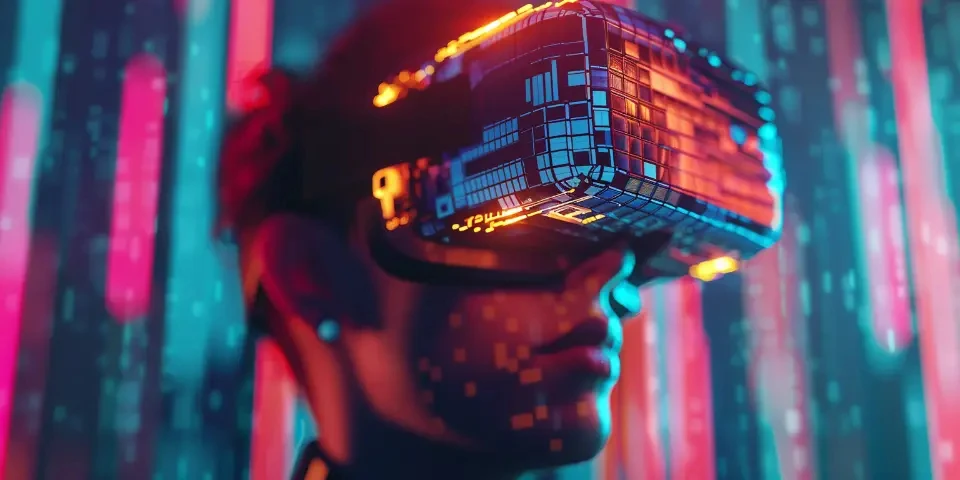Looking Ahead healthcare AI-powered hovercode is transforming patient care
Advancements in artificial intelligence (AI) technology have revolutionized various industries, and healthcare is no exception. The emergence of AI-powered hovercode is set to transform patient care, facilitating faster and more accurate diagnoses, personalized treatment plans, and efficient hospital operations. In this article, we will explore the potential impact of hovercode technology in healthcare and how it is shaping the future of patient care.
1. Enhanced Diagnostic Accuracy
AI-powered hovercode enables healthcare professionals to obtain more accurate and reliable diagnostic results. By analyzing vast amounts of medical data, including patient history, lab reports, and imaging scans, hovercode systems can pinpoint potential diseases or conditions with higher precision. This empowers doctors to make informed decisions more quickly, improving patient outcomes.

Furthermore, hovercode tools can incorporate data from a wide range of sources, including wearable devices and health monitors, further enhancing diagnostic accuracy. This integration provides a comprehensive view of a patient's health, enabling healthcare providers to identify patterns and potential risks more effectively.
2. Personalized Treatment Plans
The future of healthcare lies in personalized treatment plans tailored to individual patients. AI-powered hovercode plays a critical role in developing these plans by analyzing vast amounts of patient data, including genetics, lifestyle factors, and treatment history.
Hovercode systems can identify the most suitable medication, dosage, and treatment duration based on the unique characteristics and needs of each patient. This results in more effective treatments, minimized side effects, and improved patient adherence to prescribed regimens.
3. Efficient Hospital Operations
Hovercode technology assists in streamlining hospital operations, optimizing resource allocation, and reducing costs. AI-powered hovercode tools can efficiently manage appointments, schedules, and bed availability, ensuring that healthcare facilities operate at maximum efficiency. By automating administrative tasks, healthcare professionals can focus on providing quality patient care.
Additionally, hovercode systems can track and analyze patient flow within hospitals, identifying bottlenecks and optimizing workflows. This not only improves patient experience but also reduces waiting times and enhances overall hospital productivity.
4. Remote Patient Monitoring
A key advantage of AI-powered hovercode technology is its ability to remotely monitor patients. By leveraging wearable devices and IoT-connected sensors, hovercode systems can continuously track vital signs, movement patterns, and other health-related data, allowing healthcare providers to monitor patients from a distance.
This remote monitoring capability is particularly valuable for patients with chronic conditions or those recovering from surgeries who require regular follow-ups. Hovercode technology reduces the need for frequent hospital visits, enabling patients to receive personalized care in the comfort of their homes. It also enables timely intervention in case of any concerning changes in the patient's health parameters, preventing potential emergencies.
5. Improved Medication Management
Mistakes in medication management can have severe consequences. AI-powered hovercode offers solutions to enhance medication management, increasing patient safety. These systems provide real-time medication reminders, ensuring patients take the right medications at the correct time and dosage.
Hovercode technology can also identify potential drug interactions, allergies, contraindications, and provide alerts to healthcare professionals and patients. This proactive approach reduces medication errors, enhances treatment efficacy, and improves overall patient well-being.
6. Enhanced Medical Imaging
AI-powered hovercode is revolutionizing medical imaging interpretation. By analyzing imaging scans, such as X-rays, CT scans, and MRIs, hovercode systems can detect anomalies, identify specific conditions, and even predict disease progression.
These advanced image analysis algorithms enable faster radiological interpretation, reducing the waiting time for patients and facilitating prompt diagnosis. Hovercode technology also assists radiologists in detecting subtle abnormalities that may be missed by the human eye, leading to more accurate diagnoses.
7. Facilitating Clinical Research
Hovercode technology contributes to advancing medical research by utilizing its large-scale data analysis capabilities. AI-powered hovercode tools can mine electronic health records, research papers, and clinical trial data, identifying patterns, correlations, and potential treatment breakthroughs.
With the aid of hovercode, researchers can generate valuable insights into disease progression, response to treatments, and risk factors. This paves the way for the development of innovative therapies and personalized medicine approaches.
8. Ensuring Data Security and Privacy
The integration of AI-powered hovercode in healthcare raises concerns about data security and privacy. However, extensive measures are being taken to ensure the protection of patient information. Encryption techniques and strict access controls are implemented to safeguard sensitive data and comply with privacy regulations.
Privacy-aware hovercode algorithms are designed to balance the need for data analysis and patient confidentiality. By anonymizing and aggregating data, hovercode systems can extract valuable insights without compromising patient identity or personal information.
FAQs:
1. Will hovercode replace the need for doctors and nurses?
No, hovercode technology cannot replace the knowledge, expertise, and human interaction provided by doctors and nurses. Instead, it acts as a valuable tool that empowers healthcare professionals, enhances their capabilities, and enables more efficient and accurate patient care.
2. Is hovercode technology accessible to all healthcare facilities?
While the integration of hovercode technology may take time and resources, its accessibility is increasing. Larger healthcare facilities and research institutions are at the forefront of adopting hovercode systems, but as technology advances and becomes more affordable, smaller healthcare facilities will also be able to benefit from its potential.
3. What are the ethical implications of hovercode technology in healthcare?
Hovercode technology presents ethical considerations such as data privacy, bias in algorithms, and decision-making autonomy. It is crucial for healthcare professionals, regulators, and technology developers to work collaboratively to address these concerns and ensure that hovercode is used responsibly and ethically.
Explore your companion in WeMate